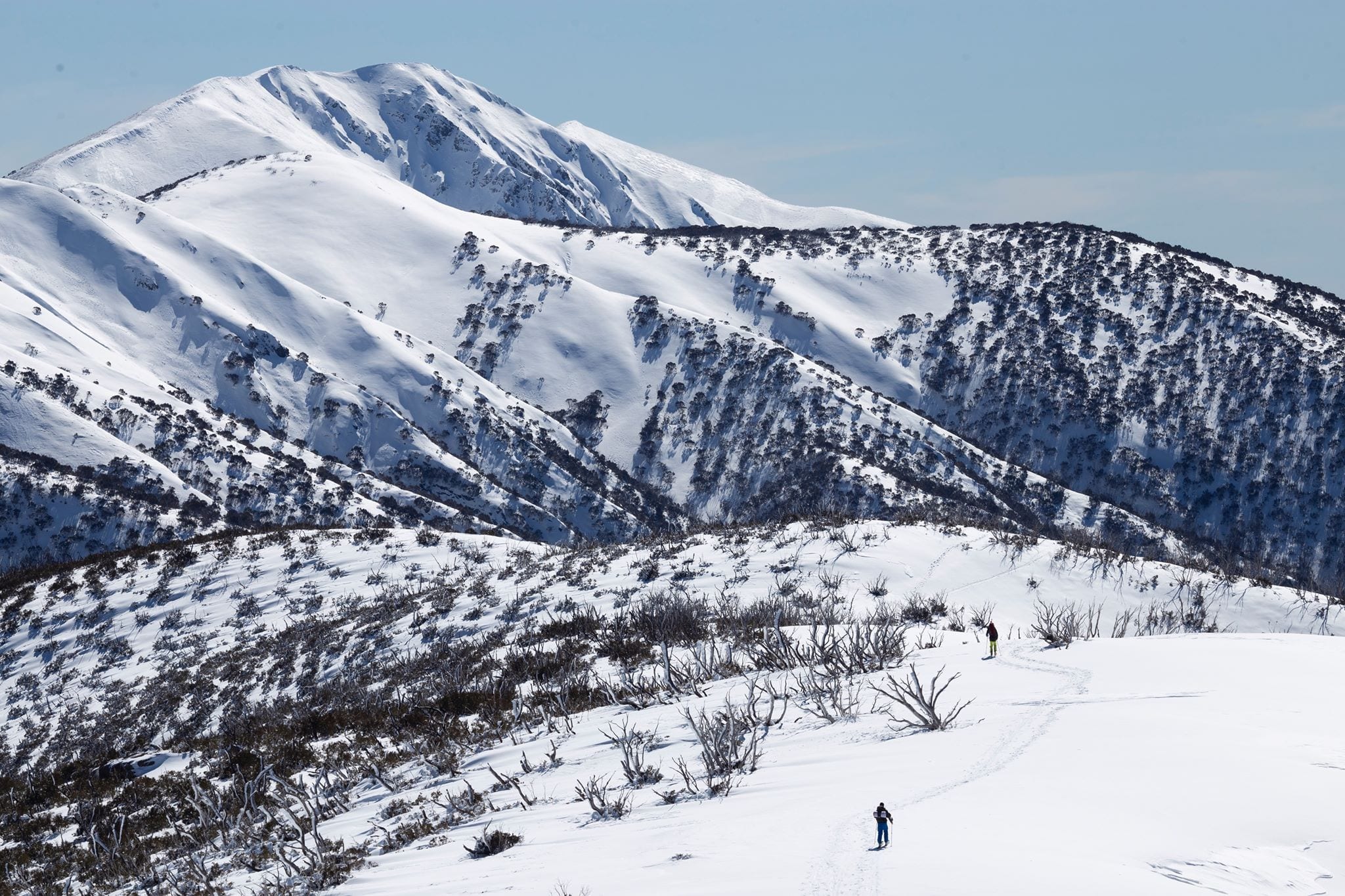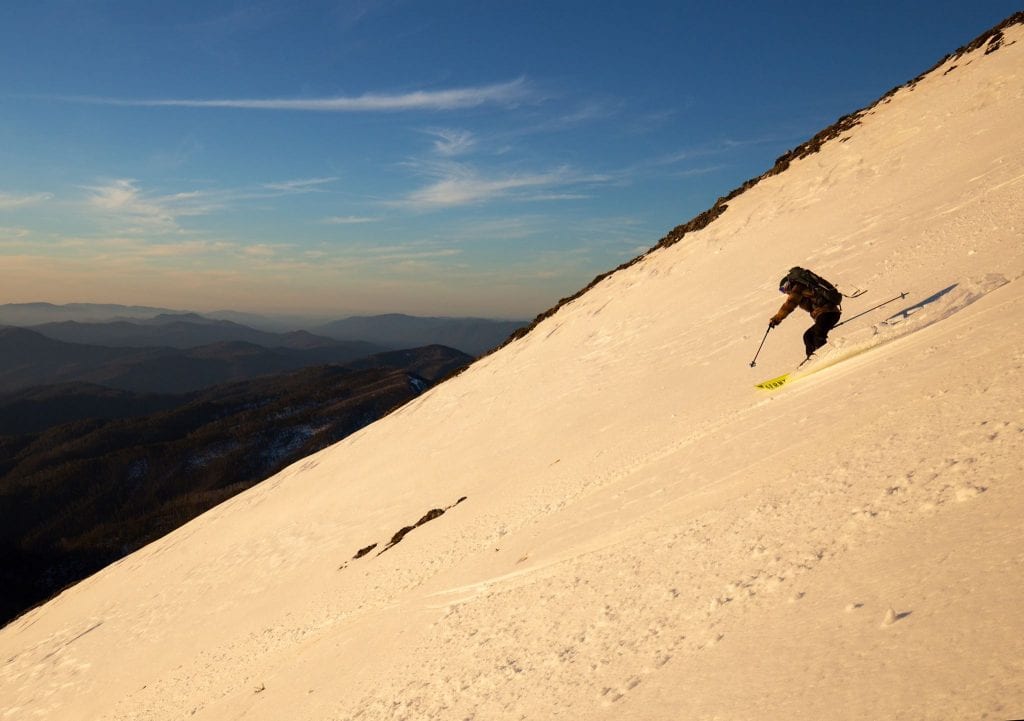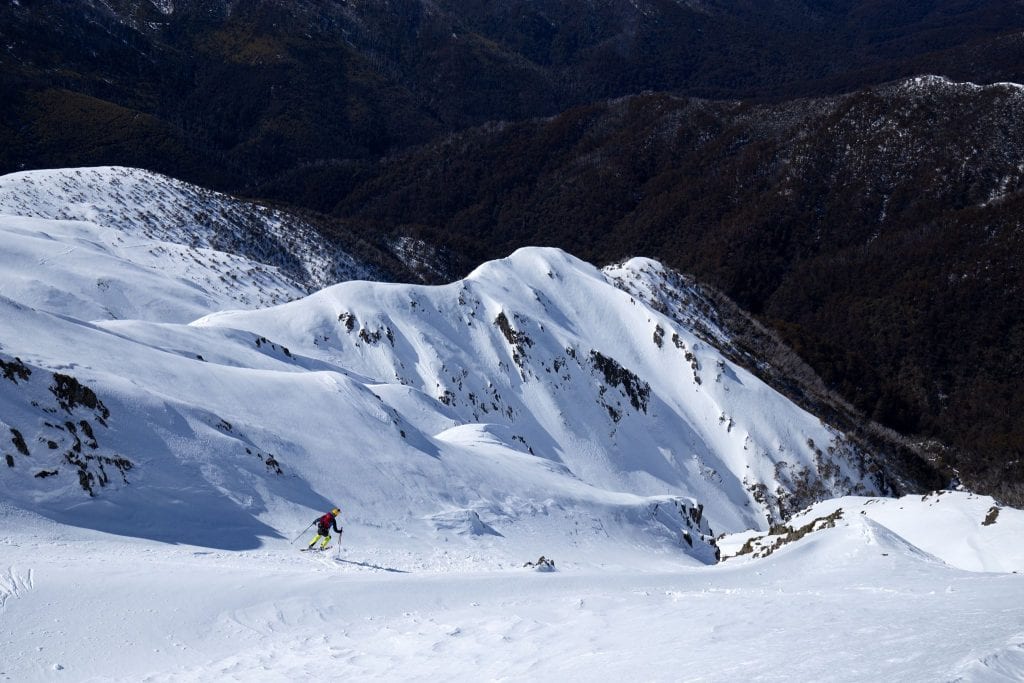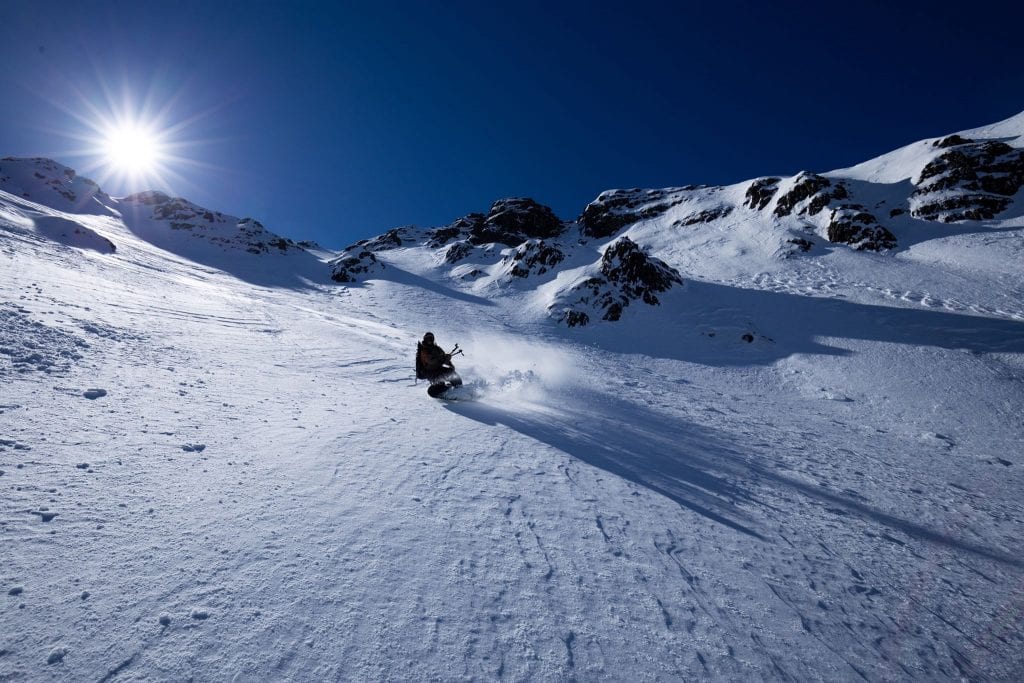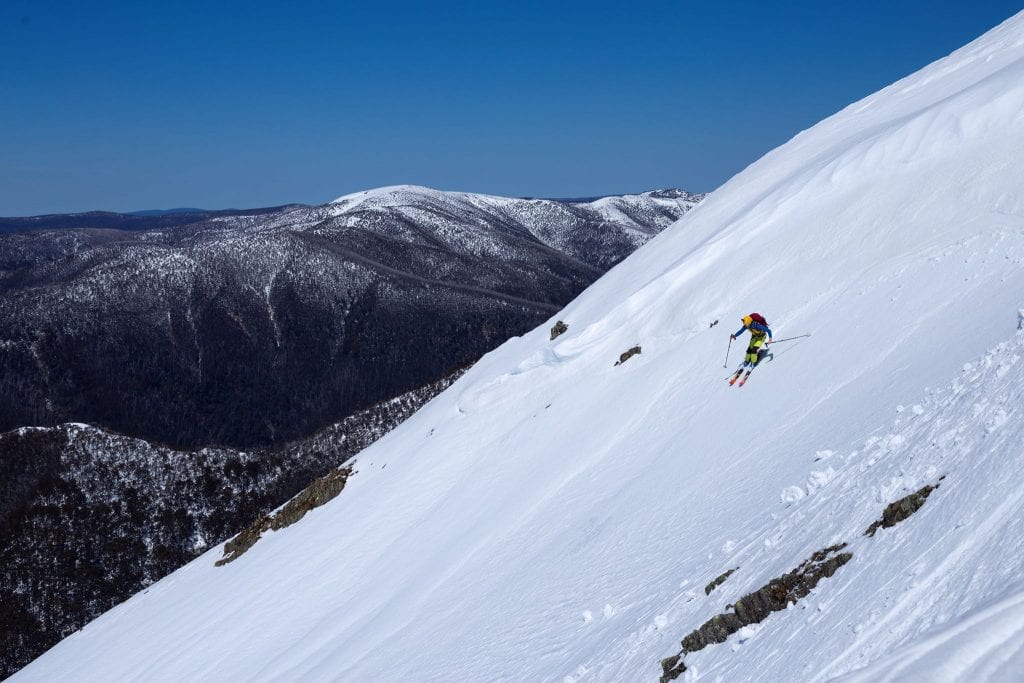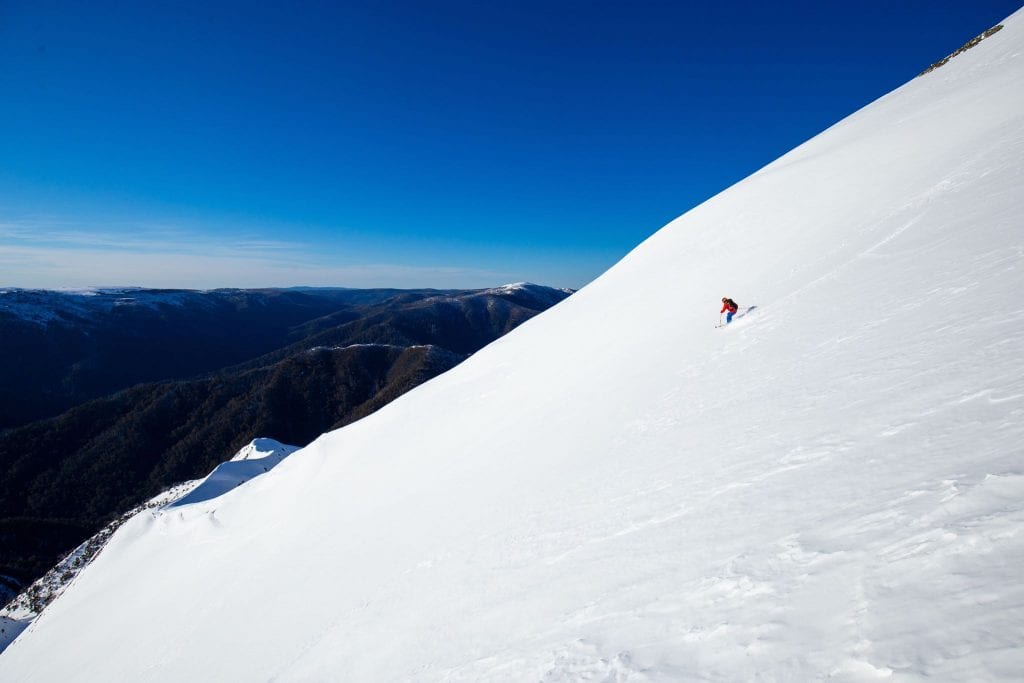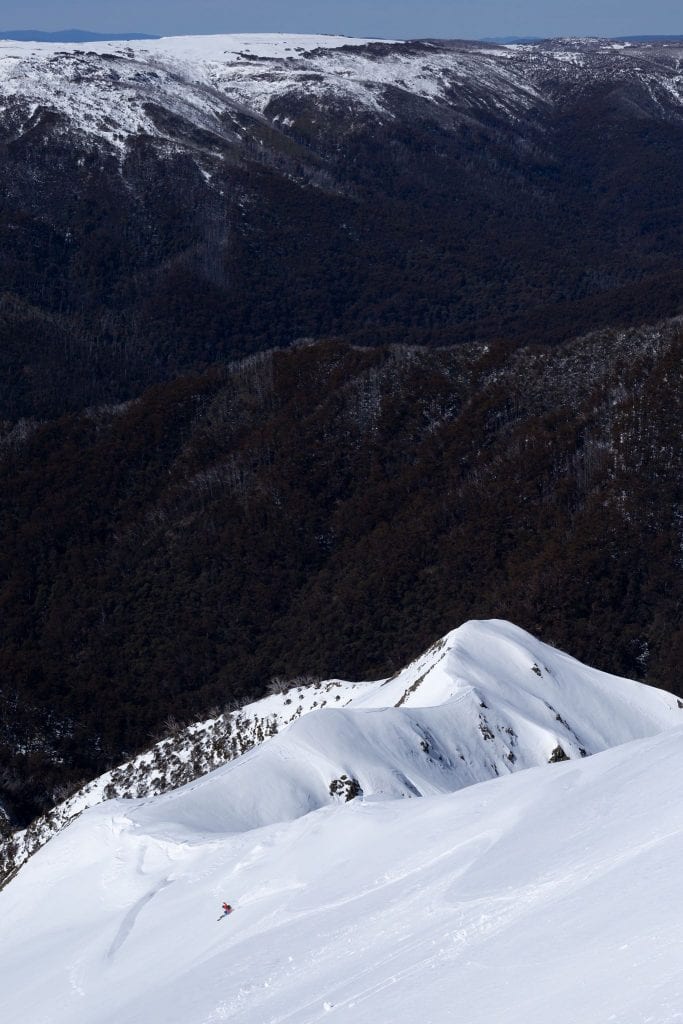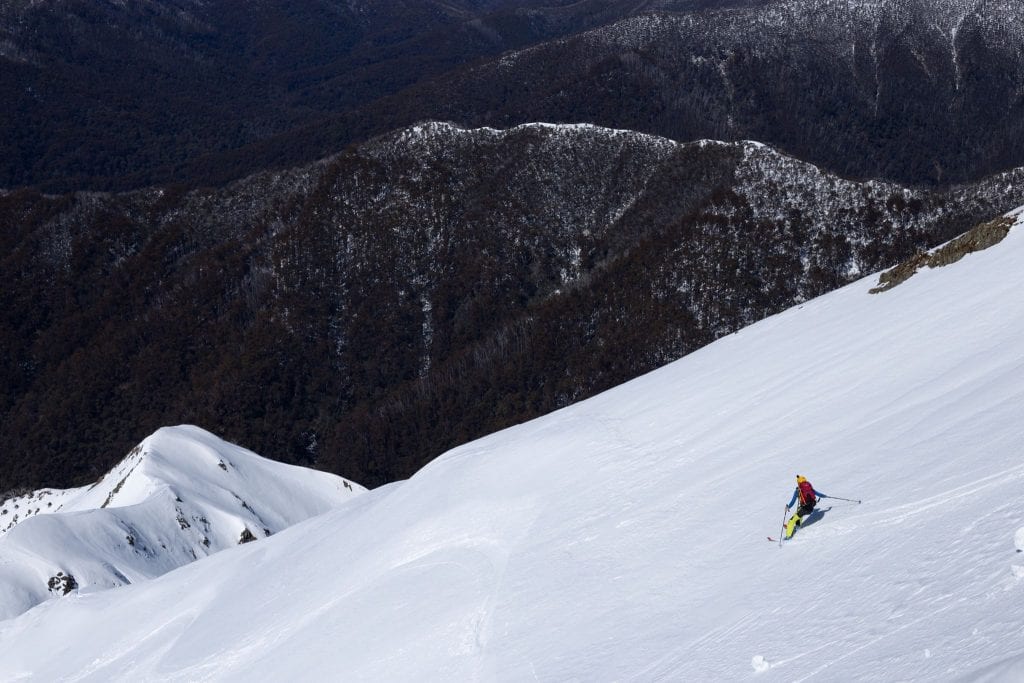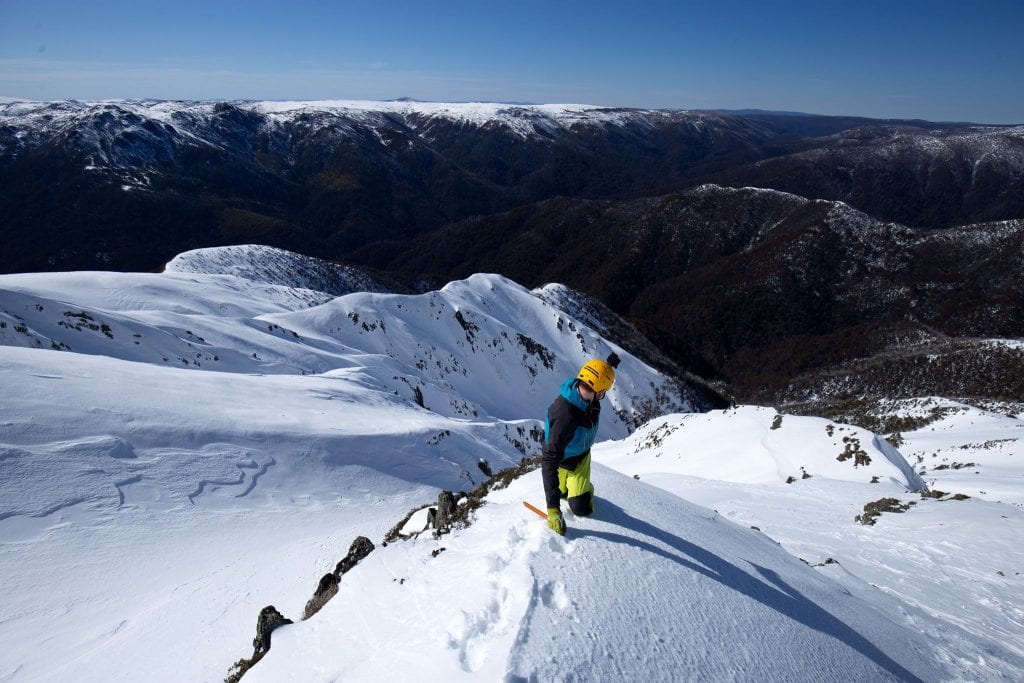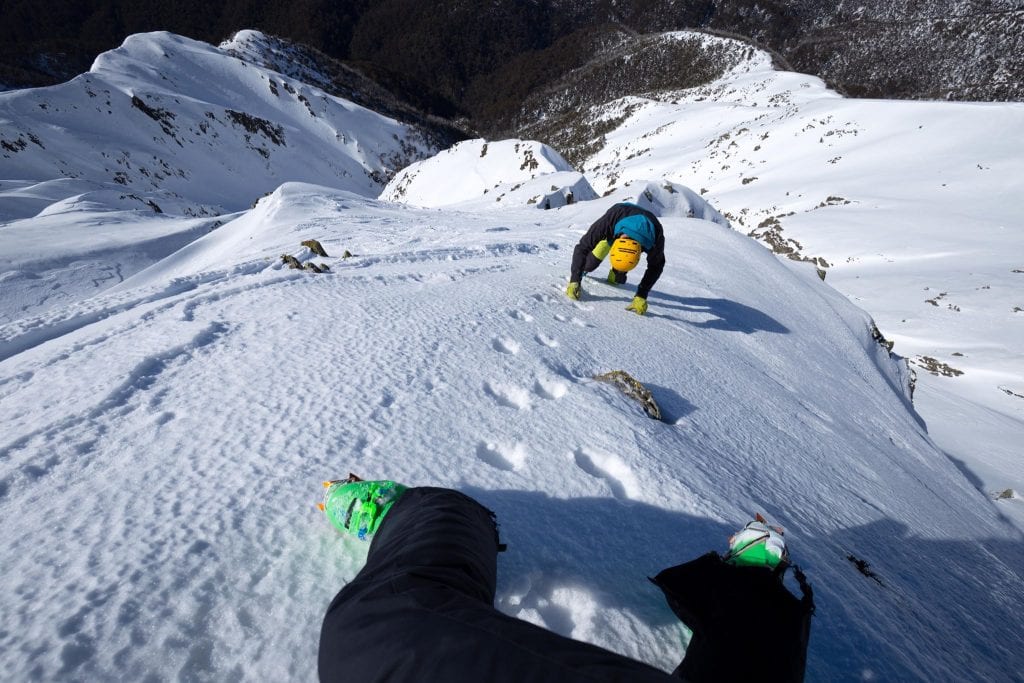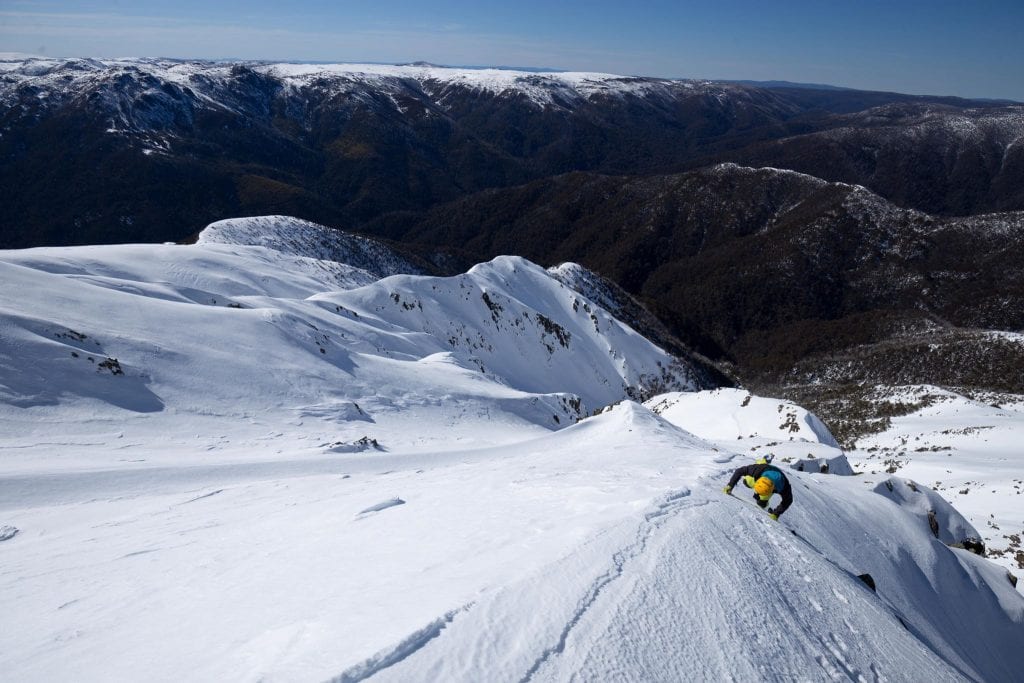If you’ve skied or snowboarded at Hotham in Victoria then you will have laid your eyes upon the almighty Feathertop mountain in the Alpine National Park. The beast of a big mountain rises prominently skyward with steep slopes and chutes and gullies reminiscent of Europe or North America, not the rolling hills of home.
Yet, there it is, all 1922 metres of snow covered goodness luring backcountry skiers into its lair. Feathertop is as famed for it’s deadly winter cornice and icy conditions as it is for steeps and deeps but every winter it presents a quality weather and snow condition window for those that follow the synoptic charts.
29 year old Shaun Mittwollen, has skied the steeps of France and hit the steepest couloir on Tasmania’s Cradle Mountain earlier this season. Feathertop has been in his sights but a late start to this season delayed his plans until September.
“I reckon Feathertop is the most impressive mountain face on the mainland because of its prominence from the surrounds. It pretty much rises straight up in all directions, unlike the Main Range” says Mittwollen.
“If we went much earlier in the season we probably couldn’t of even skied the steep south face. A number of people have slid to their death in such conditions and having been on the face now it’s easy to see why.”
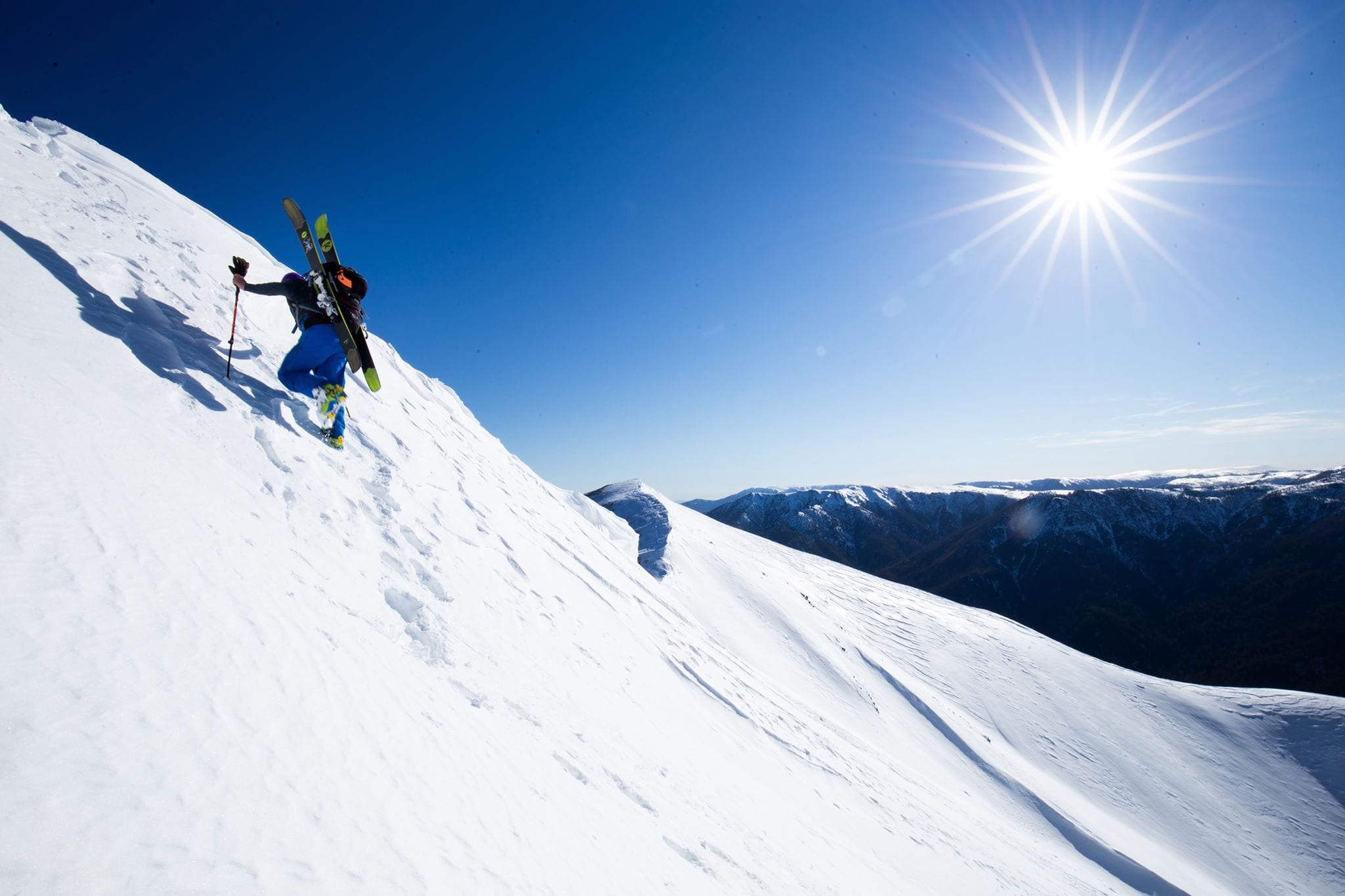
The scale and steepness of Feathertop were a huge draw card for Mittwollen. The same scale and steepness that took the life of an Australian doctor in 2011 who fell 700 metres down an icy slope. One of four backcountry skiers and boarders who have lost their lives over the years on this peak.
“After spending a bit of time in France at the start of this year I got to ski in some steep technical terrain. Being scared at the top of the line, then focusing on what you actually need to do to get to the bottom, then arriving safely at the bottom of the line, was a big sensation of accomplishment.
Even though I wasn’t smashing it high speed like the pros it was still a great feeling to negotiate such steep and technical terrain and being ok with the exposure and realising it’s actually well within your abilities if you ignore or ‘block out’ the exposure.
The weather gods aligned last week for Mittwollen and his band of merry backcountry skiers and boarders – Josh Wilson, 30, Jana Vesely, 27, Drew Jolowicz, 36 and Ben Armstrong, 24 – who took the five hour hike in and camped for two nights. The crew had two members with AST1 certification and all five had backcountry experience, though it was the first time to Feathertop for all of them and the first time camping overnight for a few.
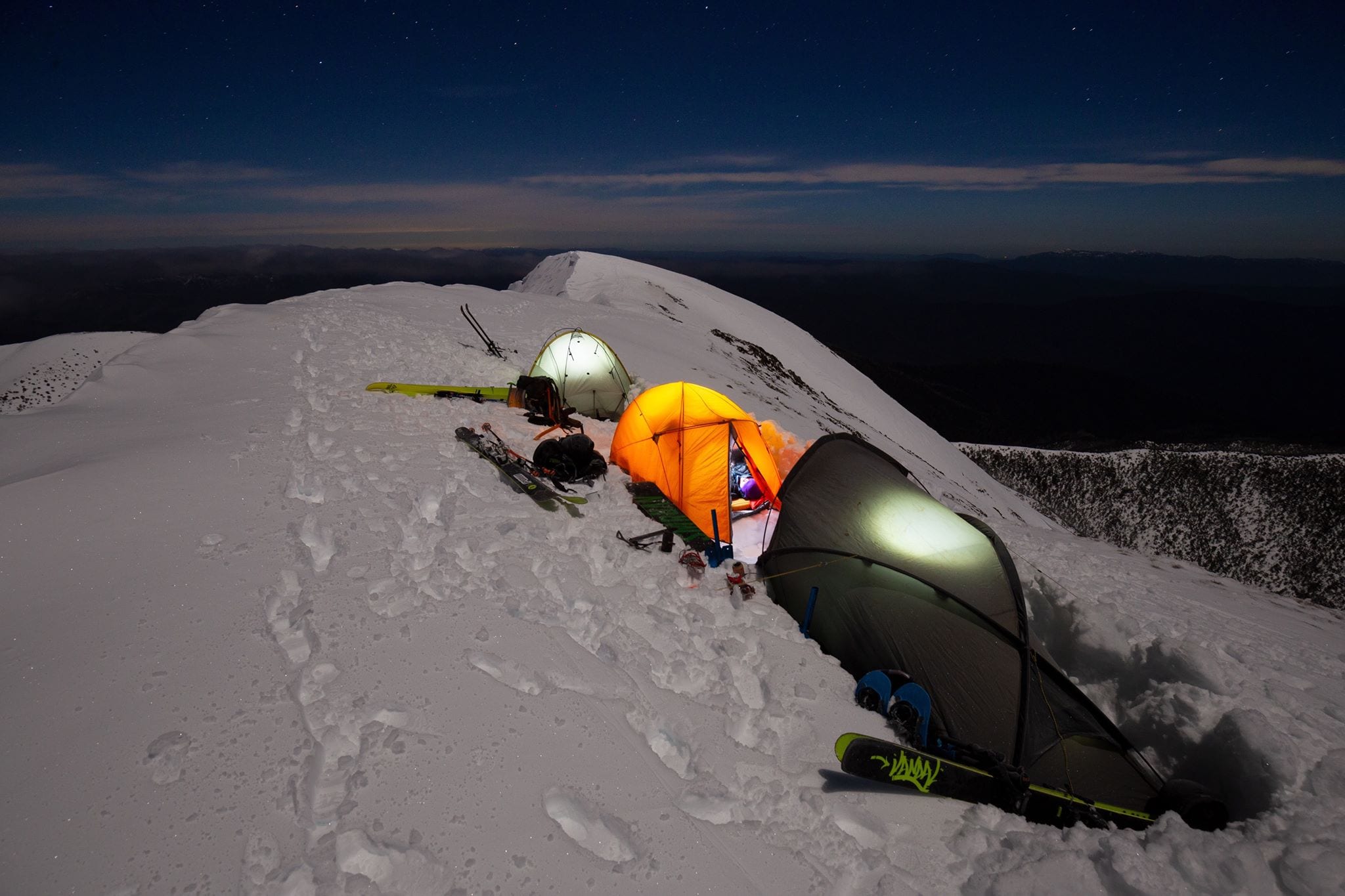
A stroke of calm weather meant the team camped on the Summit (usually high winds) for spectacular sunrise and sunsets.
How do you access Feathertop?
“So with Feathertop there are two main approaches. You can go from Harrietville via the Bungalow spur or you can go from very close to Hotham along the Razorback (Razorback Trailhead). They both have pluses and minuses” says Mittwollen.
“The Harrietville approach is sheltered in bad weather, but it involves a big ascent from well below the snowline. That means needing to carry everything on your back for the first half- ski boots and skis included and walk in with hiking boots. Having done this in Tassie a lot I realised that with a full complement of camping gear and food for three to four days it’s better to go via the Razorback and skin.
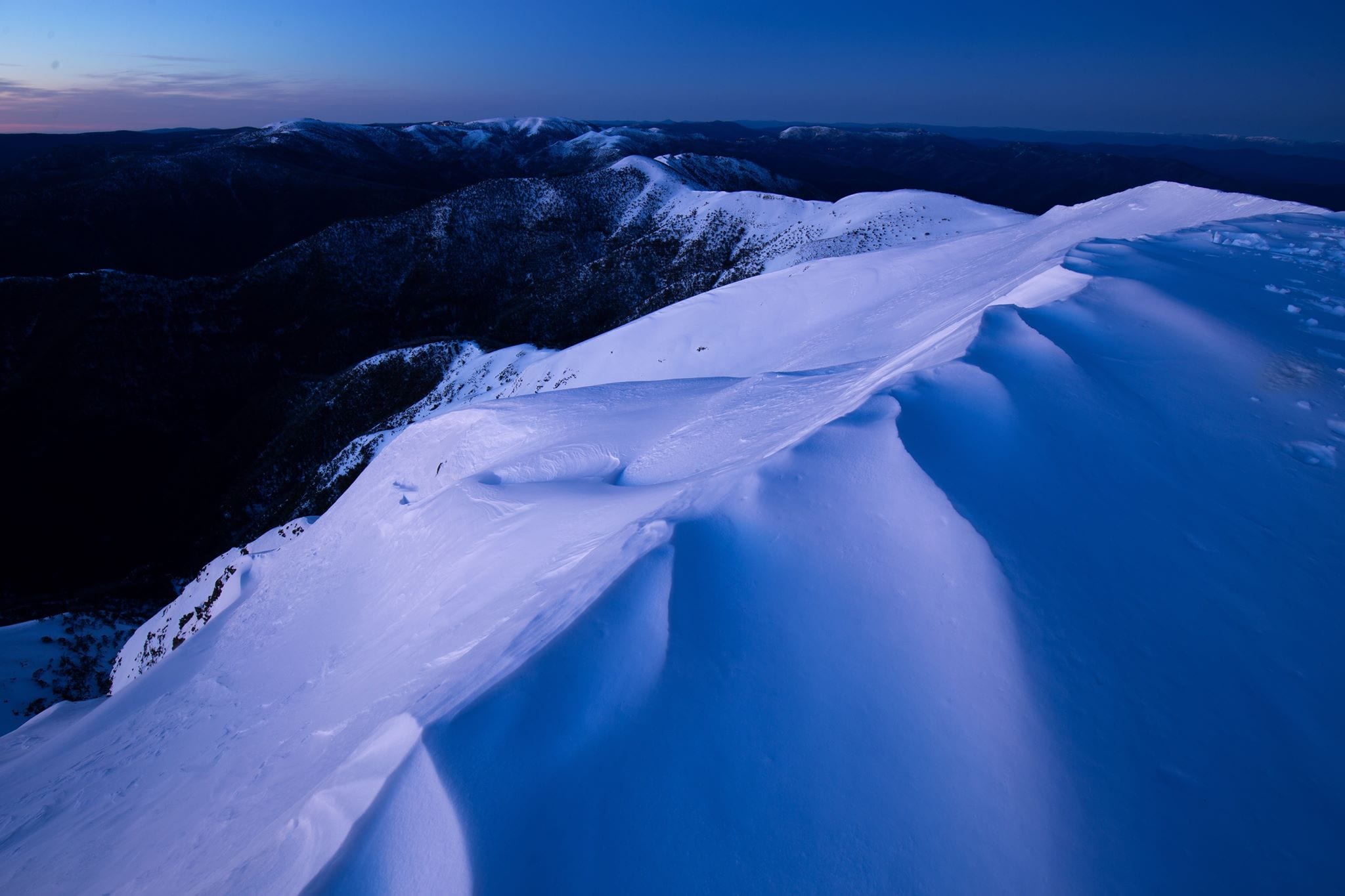
“The backpack can be 25kg+ with an approach from below the snowline” says Mittwollen. “Although the Razorback has a lot of up and down it’s a more efficient approach because you can be wearing ski boots and skinning with your skis versus carrying them. Along the Razorback it’s 12km. Although it’s more exposed to the winds we had fine weather forecast so it wasn’t an issue.
It took us four hours along the Razorback to the hut and then another hour to the summit including rests. The way back was faster as we were able to ski back to the hut – about four hours summit to trailhead excluding stops.
The Razorback is a very spectacular ridgeline and in its own right an awesome tour. It drops away fairly steeply on both sides.
The Razorback is essentially a ridge line that runs between Hotham and Feathertop. Two thirds of the way out is the twin knobs that also holds great skiing. Although we bipassed this with a focus on Feathertop.”
What of the skiing?
“There is certainly a lot of mellower stuff around that would be equivalent or just above any resort black run” says Mittwollen. “For the steeper chutes you’d want to have some experience with steep and variable snow and especially experience with exposure.”
Mittwollen regularly down climbed to check how firm the snow. If it was ok, he’d climb back up and ski the chute or face. On the north face they skied the two main bowls and on the south face they hit up Hellfire Gully, Headwall and Avalanche Gully.
“We didn’t ski Headwall into Amphitheater Chute as the snow was taking too much heat. It would have been a bit risky to ski and with a horrible climb out. We paused before it rolled over into Amphitheater and climbed out from there.”
Most of the skiing and snowboarding the crew accomplished was around 40 to 45 degrees.
- Photo credit: Shaun Mittwollen
- Photo credit: Shaun Mittwollen
- Photo credit: Shaun Mittwollen
- Photo credit: Shaun Mittwollen
- Photo credit: Shaun Mittwollen
- Photo credit: Shaun Mittwollen
- Photo credit: Shaun Mittwollen
“You see the photos and all but you don’t really get the scale. And when you see it in real life it’s probably twice as big as it looks in the photos. It’s also not crazy steep as it appears from a distance” says Mittwollen.
“When you’re standing on top its actually quite manageable just the steepness alone. But then you factor in the exposure top to bottom and I becomes pretty scarey.It’s a very long way to the bottom. But if you can block that scariness then it’s not too bad.”
Of course if it’s ice and you lose an edge it’d be hard to survive that fall but in the right snow conditions it’s ok.
“I got pretty rattled on my first run (down the Headwall) because of the reputation it has regarding exposure” reveals Mittwollen of the experience.
“But the second run (Avy Gully) I felt much better. Also the approach felt much longer than I was expecting. It definitely rivalled some of the Tassie approaches. Also there is actually some great skiing on the north faces. I guess because the snow melts out quickly on the north faces they are less often skied. And the terrain isn’t as gnarly but is still super fun. At least you can relax a bit more while you’re skiing.”
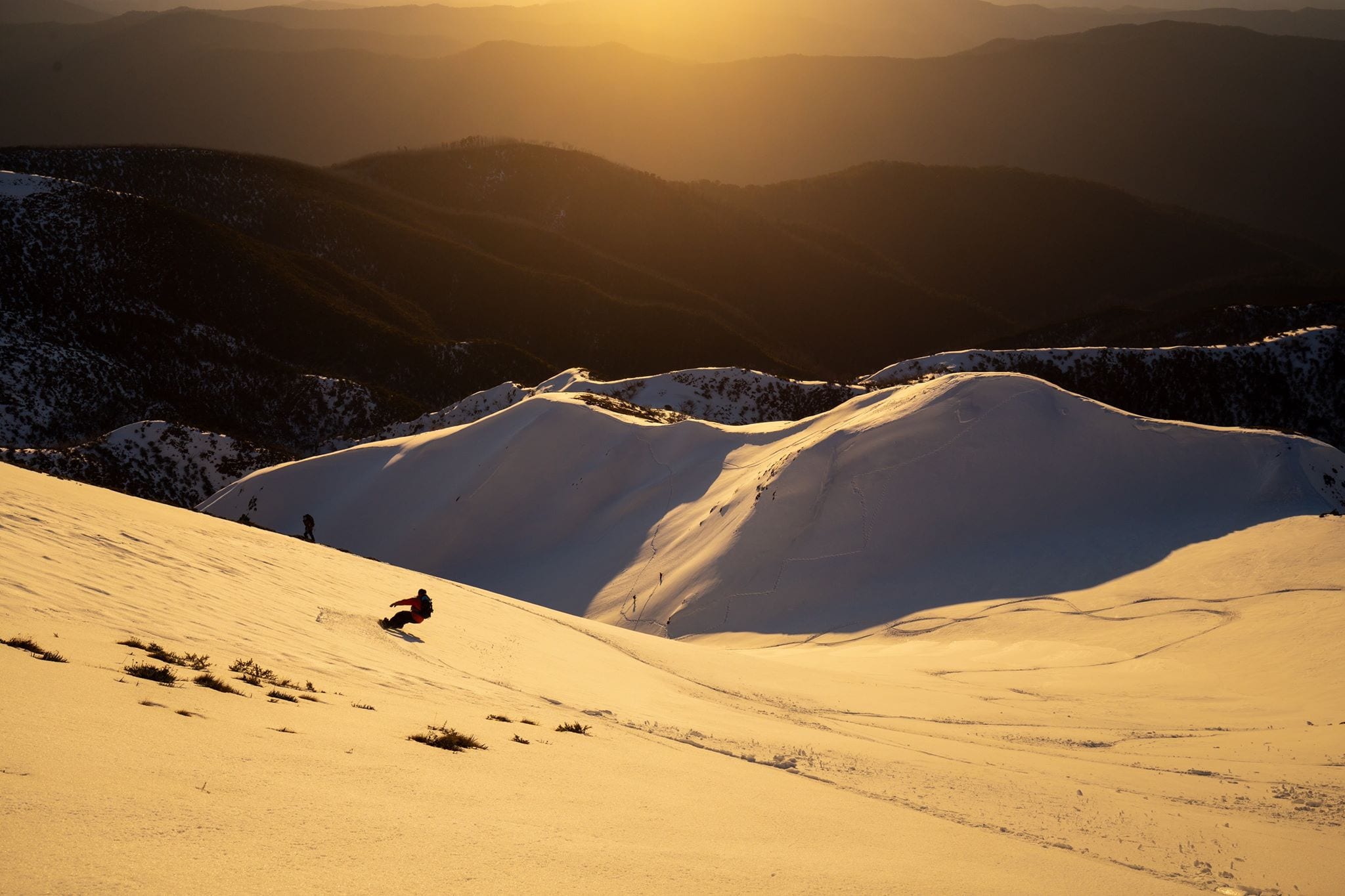
What did you take?
“So we had three tents between us. All solid but light 4 season tents to deal with any potential wind. We had either winter sleeping bags, mines good till about -12c, or doubled up summer sleeping bags (one inside of another).
Then all the usual camping gear. Stove, gas, good hiking mats and down jackets etc. I took out a pair of down booties so I could take off my ski boots around camp but still walk around in the snow. Those things are awesome.
- Photo credit: Shaun Mittwollen
- Photo credit: Shaun Mittwollen
- Photo credit: Shaun Mittwollen
Also ice axe and crampons are 100% necessary. Just for climbing the face back up. In firm snow climbing is a breeze with crampons and ice axe. If you want to ski the gnarlier stuff you really need to bring them.
Of course all the necessary avy gear as well. Beacon, shovel probe. It’s usually so scoured though that all the danger is overhead with large cornices along the Summit Ridge. Right before we went out though a strong southerly dramatically reduces the cornice size.
We didn’t let ski patrol or the national park know what we were doing however we did let our friends and family know where and what we were doing along with expected return time.
There is very good mobile coverage along the entire route and the top half of the south face. For areas with patchy coverage me and Ben both had our plb’s (Garmin inreach mini) in case of emergency.”
Any other advice
“The biggest one is the importance of taking ice axe and crampons and know how to use them to deal with exposure and how to transition from ski or board to crampons and ice axe safely in a sketchy situation” reveals Mittwollen for those wanting to ski or snowboard the steeper areas of Feathertop.
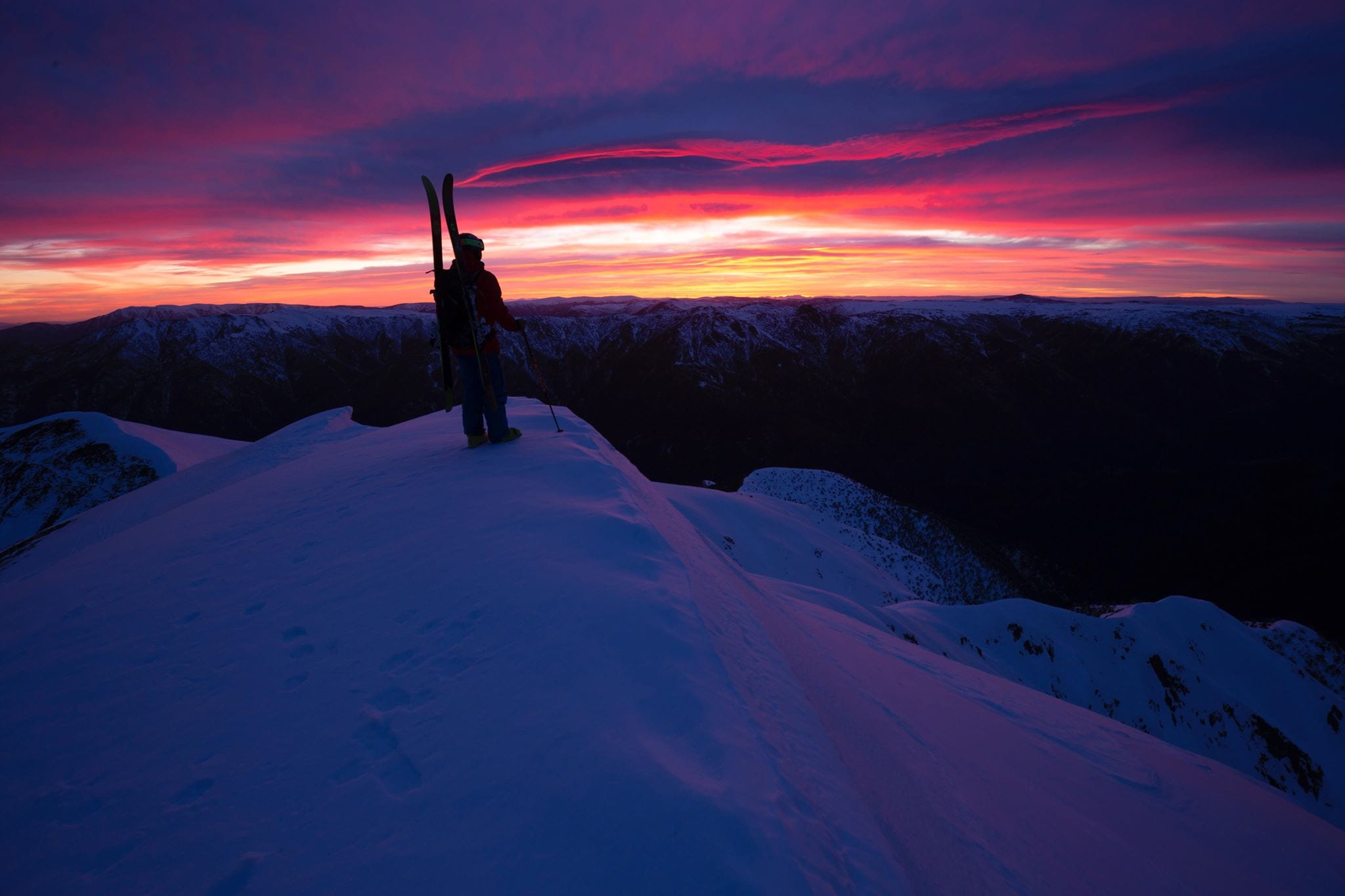
“These were also very useful down downclimb into the chutes to assess the snow conditions. Also I’d say make sure you have the correct weather window. Nice calm conditions with a large stable high over the SE Australia.
To ski the south chutes you want a freezing level +2500m and sun. The higher the freezing level the less icy it will be. I really wouldn’t attempt the chutes with less than 2500m freezing level. In these conditions to risk of hitting unedgeable ice I would imagine would be quite high.”
Please help SnowsBest survive 2020 and remain your independent source of snow news with a “Covid contribution“, from as little as $1, so we can continue to deliver the news and content you value in a year when we need each other most. Contribute here.
